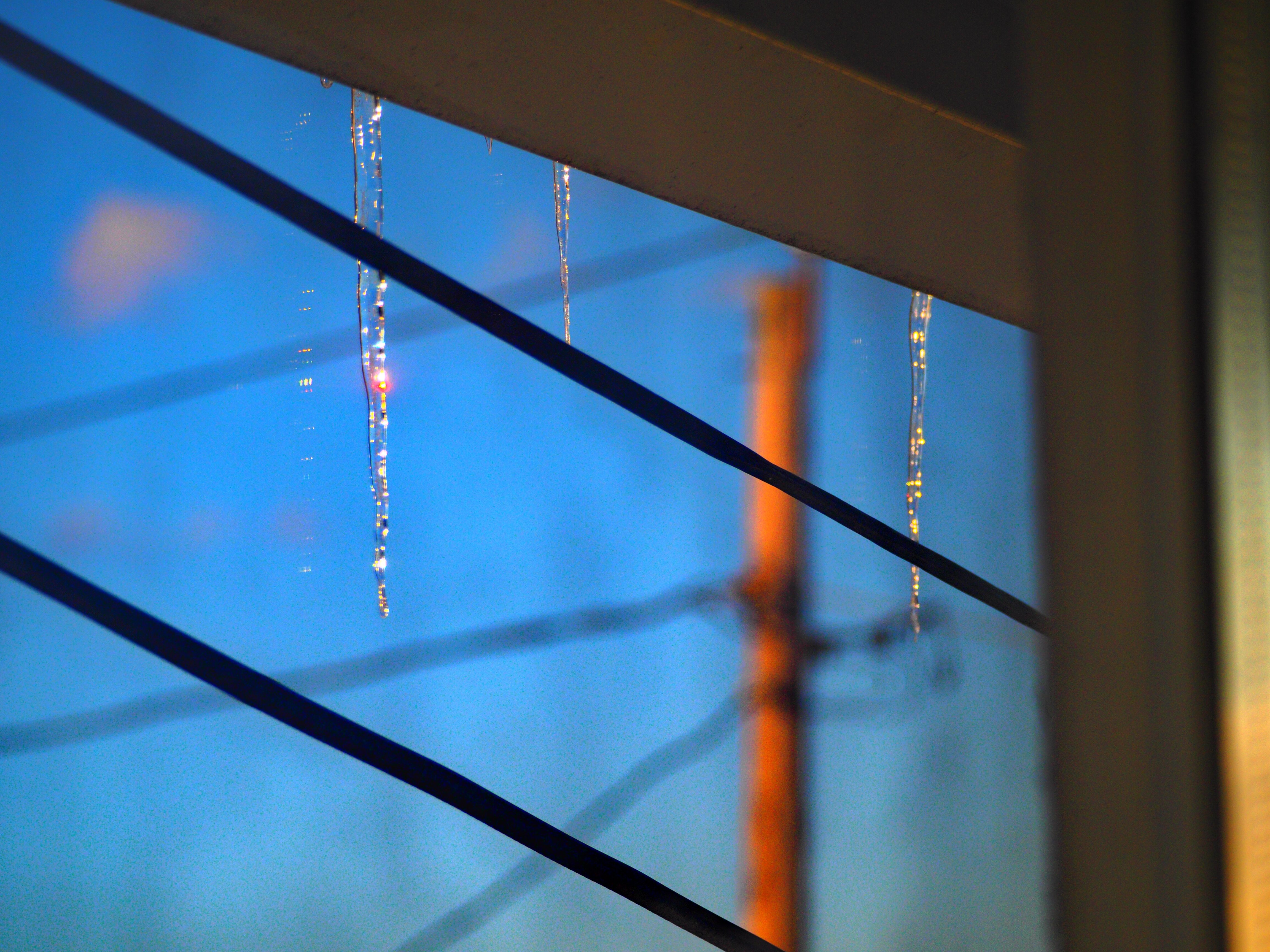-
Posts
44,789 -
Joined
Content Type
Profiles
Blogs
Forums
American Weather
Media Demo
Store
Gallery
Everything posted by LibertyBell
-

Occasional Thoughts on Climate Change
LibertyBell replied to donsutherland1's topic in Climate Change
Higher dew points also lead to higher asthma rates, as it causes car fuel exhaust particulate matter to be suspended closer to the ground. Maybe this is why higher dew points cause my light headedness? I don't know but I had a couple of very serious cases when everything went white and I couldn't hear anyone around me and lost all motor function (I felt like I was walking in a swamp). One time I had to be taken to a hospital because it caused me to black out (or white out), fall off a bus and I injured my tailbone. I didn't remember anything other than the bus reached the last stop, the terminal, and I got up extremely light headed trying to walk (after trying to lie down in the bus which actually made me feel worse-- like my head was detached from my body) and made it to the steps and then I don't remember anything. People later told me I fell down and got up several times and kept falling down, until the last time, which I do remember, which felt like a fog clearing. I had a bruised tail bone and could not sit properly for a month (and it recurred two other times around the holidays). The three times I had this issue, it was cloudy all three times with temperatures in the 80s and dew points of 75+ It never happens when it's around 100 and sunny and it's a drier heat. -

Occasional Thoughts on Climate Change
LibertyBell replied to donsutherland1's topic in Climate Change
But what I'm saying is that higher dew points are much more dangerous than higher temperatures are. I'll use myself as an example, I get extremely dizzy and light headed when the temperature is in the 80s and the dew point is 75+ and cloudy. I am fine and even go running when the temperature is around 100 and the dew point is in the 50s and 60s. About the farming, widespread use of corn and soy and their oils really isn't healthy, I switched to olive oil years ago and experienced a drop in my blood pressure. It's why the Meditterrannean diet is so much better. -

July 2025 Discussion-OBS - seasonable summer variability
LibertyBell replied to wdrag's topic in New York City Metro
1993: The Great Mississippi River Flood of 1993: Rising water stopped all rail traffic through Kansas City, MO. Flood crests from the Missouri and Kansas Rivers pushed toward Kansas City, MO at the same time, prompting fears that the crests would arrive simultaneously, pushing water over the city's flood control levees. Fortunately, the crests arrived six hours apart, with water levels just lapping at the very tops of the levees. (Ref. Wilson Wx. History)1995: Powhatan County, VA a woman received minor injuries when lightning struck her near the front door of her house. (Ref. Lightning - Virginia Weather History)1995: A heat wave began on this date across the southwest and continued through the 29th. Record highs included: Coachella, CA: 120 °F, Phoenix, AZ: 118 °F, San Jacinto, CA: 113 °F, Tucson, AZ: 113 °F, Riverside, CA: 112°, Banning, CA: 111 °F, Moreno Valley, CA: 111 °F, Sun City, CA: 111 °F and Yucaipa: 110 °F and Winslow, AZ: 103 °F. A male tourist from Ohio drowned in a rip current at Lake Worth Beach, FL. Strong easterly winds associated with the approach of Tropical Storm Erin caused the rip current. (Ref. Wilson Wx. History) Big heat continued around this time in both 1993 and 1995 !! -

July 2025 Discussion-OBS - seasonable summer variability
LibertyBell replied to wdrag's topic in New York City Metro
it's not supposed to be 100 anywhere tomorrow, thats for Tuesday and Wednesday. -

Occasional Thoughts on Climate Change
LibertyBell replied to donsutherland1's topic in Climate Change
there are some health problems linked with higher corn and soy consumption too, I think it has to do with monotype agriculture. High consumption of corn oil and soybean oil also isn't good, olive oil is FAR better (especially for your heart.) -

Occasional Thoughts on Climate Change
LibertyBell replied to donsutherland1's topic in Climate Change
It's not natural to have these large fields of corn and soy and the evapotranspiration caused by these out of place fields causes something that is far deadlier than higher temperature-- much higher dew points. The much higher dew points have been directly linked to hundreds of people dying, like in the lethal 1995 heatwave that killed nearly 600 people in the Chicago area. -

Occasional Thoughts on Climate Change
LibertyBell replied to donsutherland1's topic in Climate Change
Yes, which is why it's important to remove both H20 and CO2 from the atmosphere before that happens. There are devices that can now convert water vapor directly into precious drinking water. -

Occasional Thoughts on Climate Change
LibertyBell replied to donsutherland1's topic in Climate Change
It must have happened in the first half of the month, because especially after June 20th, we saw extreme heat the likes of which this area has rarely ever seen. -

Occasional Thoughts on Climate Change
LibertyBell replied to donsutherland1's topic in Climate Change
we have had a near record hot June/July here, the only one that was hotter was 2010. -

Occasional Thoughts on Climate Change
LibertyBell replied to donsutherland1's topic in Climate Change
whats going on in the Midwest isn't a good thing, thats why I'm completely against the corn and soy cartels -
and yet we only had a two year break and were back at it for 13-14 and 14-15 We probably won't see 4 seasons like that again in our lifetime.
-

July 2025 Discussion-OBS - seasonable summer variability
LibertyBell replied to wdrag's topic in New York City Metro
If the moon was around we'd probably see it, as smoke or haze makes the moon look orange -

July 2025 Discussion-OBS - seasonable summer variability
LibertyBell replied to wdrag's topic in New York City Metro
somehow the smoke always goes away at night..... -
wild a lot of extremes in the 1930s, it seems to have a 30 year recurrence rate as the 1960s and the 1990s were very similar: Note 1930s 1931-32 winter VERY WARM 1933 summer VERY HOT 1933-34 winter VERY COLD AND SNOWY 1935-36 winter VERY COLD 1936 summer VERY HOT 1960s 1965-66 winter COLD AND SNOWY 1966 summer VERY HOT 1966-67 winter VERY COLD AND SNOWY 1990s 1991 summer VERY HOT 1992-93 winter VERY STORMY 1993 summer VERY HOT 1993-94 winter VERY COLD AND SNOWY 1994 summer VERY HOT 1995 summer VERY HOT 1995-96 winter VERY COLD AND SNOWY 1999 summer VERY HOT
-

July 2025 Discussion-OBS - seasonable summer variability
LibertyBell replied to wdrag's topic in New York City Metro
hopefully we make it since the rest of the month looks very hot -

July 2025 Discussion-OBS - seasonable summer variability
LibertyBell replied to wdrag's topic in New York City Metro
I hope this air pollution from Canada doesn't interrupt our heat next week. -

July 2025 Discussion-OBS - seasonable summer variability
LibertyBell replied to wdrag's topic in New York City Metro
what about for Tuesday -

July 2025 Discussion-OBS - seasonable summer variability
LibertyBell replied to wdrag's topic in New York City Metro
wow nice, 2011 was oh so close -
most of the dustbowl winters were horrible, especially 1931-32, but didn't you get a lot of snow and cold in 1933-34?
-
wow nothing close to 1936 even 1988 is 3 less. ours was 4 in 1953 and 1966 at NYC 3 at JFK in 1966 and 3 there in 2010
-
1890s were really hot too, there was a historic 10 day heatwave in 1896 that killed 1,500 people in NYC.
-
wow that is big but looks like they leveled off after the 1940s and even dipped for a bit in the 2000s and then went back up to 1930s-1940s levels during the 2010s.
-
I guess you rarely hit 100, was the last time in the 1950s?
-

July 2025 Discussion-OBS - seasonable summer variability
LibertyBell replied to wdrag's topic in New York City Metro
Yes this could be our last big heat for the season so it would be nice to go out with a bang lol. -
our record for 90 and 95 and 100 degree days is now 2010, but before that it was 1983 and before that 1966 and before that 1949, 1953, 1955 hold those records.





